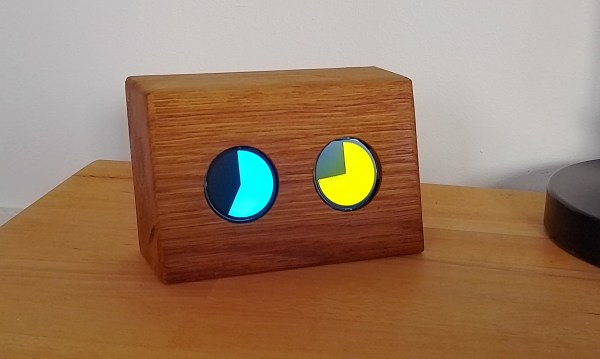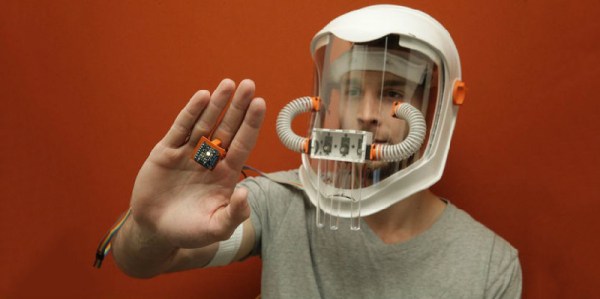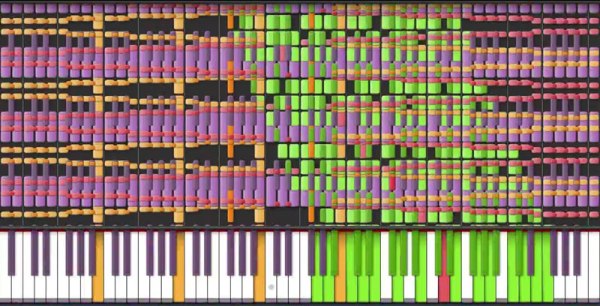We often think of synesthetes as those people who associate say, colors with numbers. But the phenomenon can occur with any of the senses. Simply put, when one sense is activated, synesthesia causes one to experience an unrelated, activated sense. Sounds trippy, no?
Thankfully, [Markus Opitz]’s synesthetic clock doesn’t require one to have synesthesia. It’s actually quite easy to read, we think. Can you tell what time it is in the image above? The only real requirement seems to be knowing the AM color from the PM color. The minute display cycles through blue, green, yellow, and red as the hour progresses.
Behind that pair of GC9a01 round displays lies an ESP32 and a real-time clock module. [Markus] couldn’t find a fillArc function, so instead he is drawing triangles whose ends lie outside the visible area. To calculate the size of the triangle, [Markus] is using the angle function tangent, so each minute has an angle of 6°.
[Markus] created a simple but attractive oak housing for the clock, but suggests anything from cardboard and plastic to a book. What’s the most interesting thing you’ve ever used for an enclosure? Let us know in the comments.
Do you appreciate a good analog clock when you see one? Here’s a clock that uses analog meters for its display.














